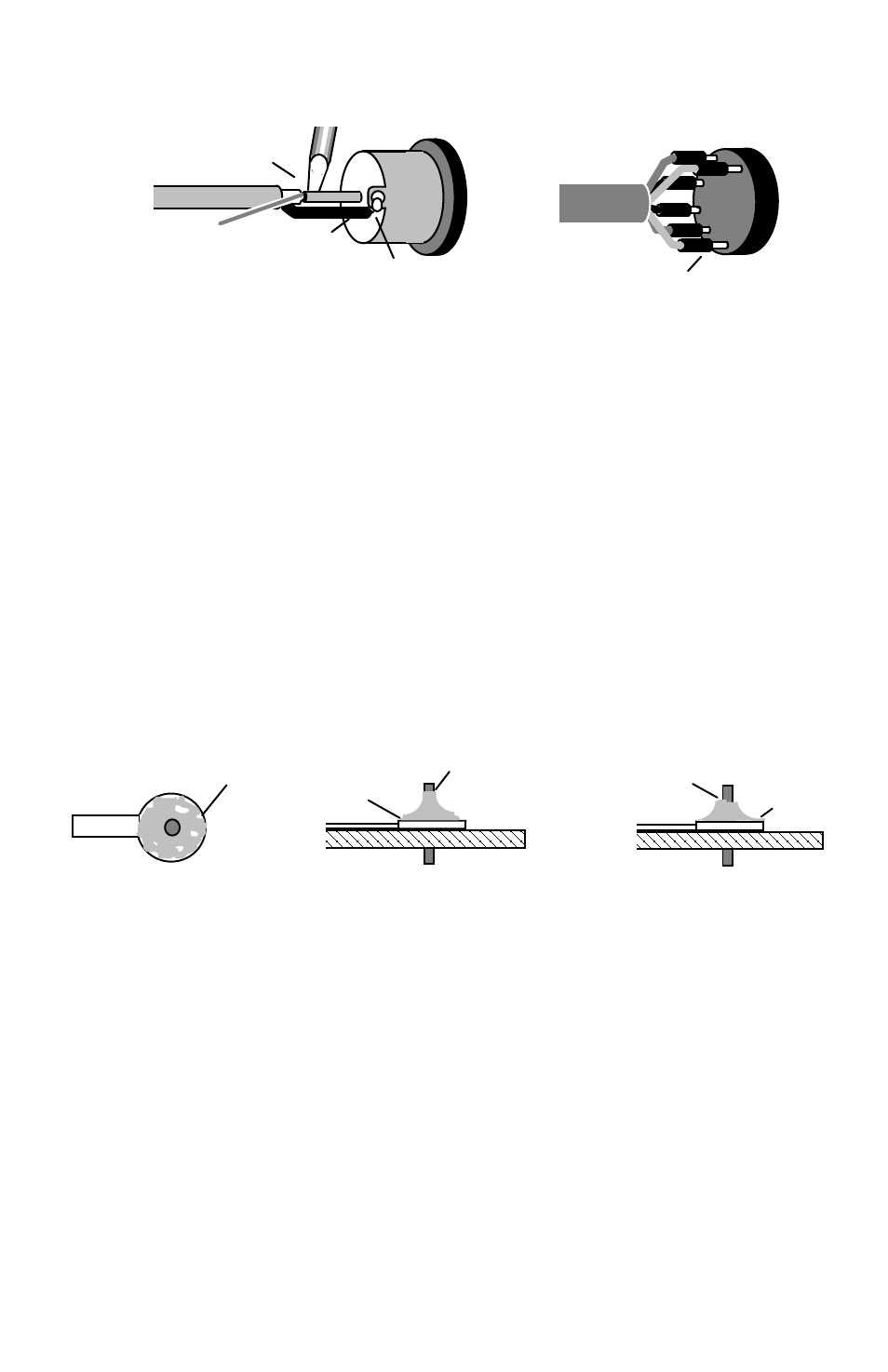Vectronics VEC-1500K User Manual
Page 35

30
Wrap wire for mechanical hold
Chassis BNC connector
Chassis DIN connector
Sleeve exposed connector terminals
Heat hollow terminal pin
Sleeve
Apply solder to opening
Make sure all wire strands are dressed cleanly. A stray strand hanging off a
connector lug or terminal could cause a short circuit later on.
Soldering--Good and Bad
If a connection is bad there will be tell-tale signs. By the same token, if a
connection is technically "perfect", there will be tell-tale signs of that, too! Here
are some visual clues for recognizing each:
Solderability vs Retraction:
Solder adheres when surface areas are activated
and bonding sites are available. If preparation is "good", the entire solderable
area is available for bonding, allowing solder to flow outward and adhere
uniformly. If preparation is "bad", surfaces resist bonding and the connection
shows evidence of retraction. Here, solder may appear to "roll down" to a
visible margin on metal surfaces, and "potholes" may be present where solder
failed to adhere.
uneven coverage,
pits, retraction.
Pad Contamination--
Wire Contamination--
Wire okay
Pad okay
uneven margin, retraction.
The cure for retraction is usually better PC board cleaning or lead preparation.
If component lead contamination is a problem, heavy oxides can be removed
easily by scraping with a hobby knife or swiping with emery cloth. A pencil
eraser will clean pads without removing tinning.
How Much Solder is Enough
In a good connection, solder appears bright, shiny, and uniformly distributed.
Also, the surface of the connection may appear slightly concave due to strong
forces of adhesion pulling solder outward during wetting. Avoid using excess
solder. If the connection looks like a "solder mound" instead of a "solder
volcano", you've applied too much!
